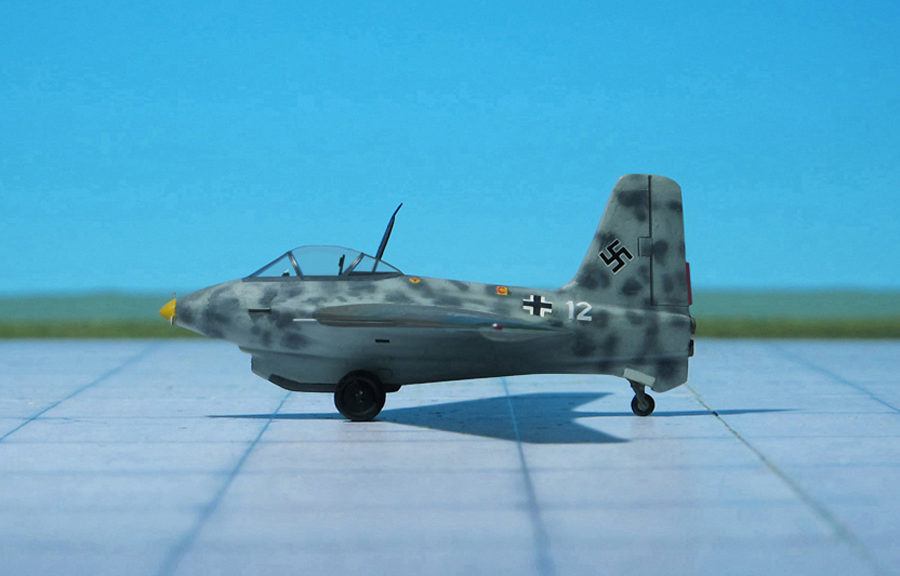TYPE: Rocket-powered interceptor fighter
ACCOMMODATION: Pilot only
POWER PLANT: One Walter HWK 509C-1 bi-fuel rocket engine, rated at 2,000 kp main chamber plus 400 kp auxiliary chamber
PERFORMANCE: 596 mph at 40,000 ft.
COMMENT: As soon as it was realized that the HWK 509A rocket engine of the Messerschmitt Me 163B “Komet” consume appreciable more fuel than had been calculated, reducing commensurately the powered endurance of the aircraft, Professor Walter began investigating the possibility of introducing an auxiliary cruising chamber which achieved test status during 1944 in two B-series prototypes, the Me 163B V6 and Me 163B V18, these subsequently serving as test beds for the Me 163C-series. The cruising chamber afforded a thrust of 400 kp which was additional to the normal full-power thrust rating, and the intention was that the aircraft should take off and climb to operational altitude with both rocket chambers operating at full thrust, then cut the main chamber and cruise on the power of the auxiliary chamber alone. Apart from provision of a fully-retractable tailwheel which was positioned further forward to allow for the twin vertically-disposed rocket pipes, some revision of the keel line and shortening of the landing skid, the Me 163B V6 and Me 163B V18 were externally similar to the standard Me 162B-series production aircraft.
On July 1944, test pilot Rolf Opitz took off from Peenemünde in the Me 163B V18 for the first climb calibration trials with both rocket chambers functioning. Everything went according to plan until, just above 13,000 ft., the aircraft began to accelerate. At 14,760 ft. the climb rate of the aircraft was still increasing and within four seconds the aircraft has passed 16,400 ft. Another few seconds and the aircraft exceeded its critical Mach number, and Opitz promptly cut the rocket motor. The prototype immediately went into a steep dive from which Opitz only succeeded in recovering a few feet above the waters of the Baltic Sea. After landing back at Peenemünde Opitz discovered that almost the entire rudder of the aircraft had been ripped away, and it was subsequently ascertained the Me 163B V18 had attained a speed of 702 mph.
While test with both prototypes were proceeding, the Messerschmitt drawing office was working on a refined version of the rocket fighter, the Messerschmitt Me 163C, intended from the onset to utilize the auxiliary cruising chamber. While the wings of the new model were essentially similar to those of the Me 163B, a new centre section was introduced which increased overall span and gross area. This was married to an enlarged fuselage of improved fineness ratio which accommodated the pilot in a pressurized cockpit enclosed by a blister-type all-round vision canopy. The T-Stoff and C-Stoff tankage was increased and the armament, which could comprise either two 20-mm MG 151 or two 30-mm MK 108 cannon, was transferred from the wing roots to the fuselage. The additional tank capacity and cockpit pressurization allowed the maximum altitude to increase to 52,000 ft, as well as improving powered time to about 12 minutes, almost doubling combat time (from about five minutes to nine).
Preparations for the series production of the new model as Messerschmitt Me 163C-1a began late in 1944, but only three were reportedly completed, the being allocated “Versuchs” number as Me 163C V1, V2 And V3, and only one is known to have flown before all three were destroyed to prevent them falling into Soviet hands (Ref.: 7).












